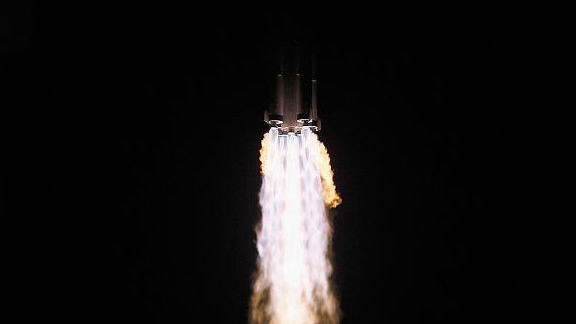China’s first space station Tiangong-1 is expected to die a fiery death within two months, according to a new estimate by a US space research company.
All eyes (and telescopes) have been on the spacecraft ever since it retired in March 2016, with speculations orbiting around when it could reenter the earth’s atmosphere and whether its disintegrated debris would pose a threat to the planet’s inhabitants – something scientists at home and abroad have refuted as "highly unlikely."
The Aerospace Corporation, a California-based nonprofit organization, predicted on Wednesday that Tiangong-1, or "Heavenly Palace-1", will return home in mid-March 2018, and gave a margin of error of up to two weeks. In other terms, the vessel’s reentry could take place at any day between the last week of February and the beginning of April.
Chinese authorities have yet to comment on the new date, however the aerospace company's calculation is a revised time window of the spacecraft’s re-entry, which was previously expected to occur in the latter half of last year.
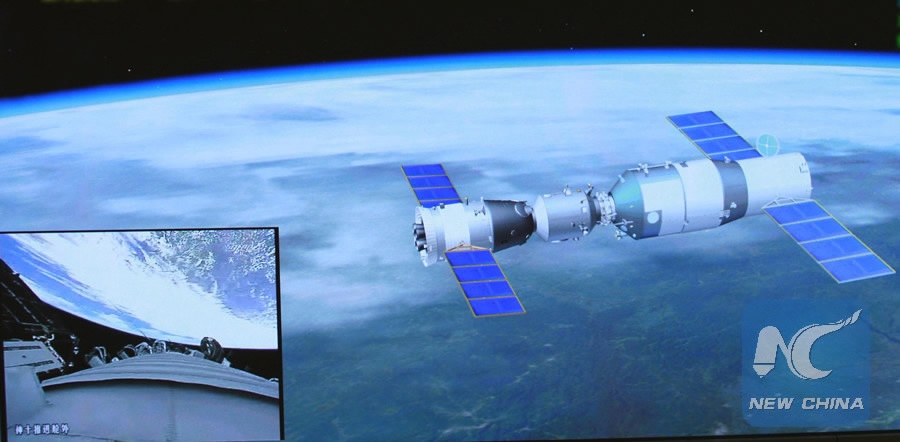
June 13, 2013: Shenzhou-10 manned spacecraft conducts an automated docking with the orbiting Tiangong-1 space module. /Xinhua Photo
June 13, 2013: Shenzhou-10 manned spacecraft conducts an automated docking with the orbiting Tiangong-1 space module. /Xinhua Photo
The Tiangong-1 space lab thrust China’s space ambitions to new heights when it was launched aboard a Long March-2F/G carrier rocket on September 2011, marking China's presence in low Earth orbit.
Catapulting China's space aspirations
The 8.5-tonne vessel was a test-bed to perfect orbital rendezvous and docking techniques, critical capabilities for the success of the Tiangong-2 space lab (launched in 2016) and the country’s future space station, on which assembly work is expected to begin in 2019.
Three spacecraft, namely the unmanned Shenzhou-8 (November 2011) and crewed Shenzhou-9 (June 2012) and Shenzhou-10 (June 2013), successfully docked six times with the lab, which was also a site for experiments related to space technology, space-earth remote sensing and environment exploration.
The craft hosted China’s first female taikonaut (Chinese astronaut) Liu Yang in 2012, and the country’s first ever space lecture a year later, given by Wang Yaping, the second Chinese woman in space and member of the Shenzhou-10 mission team.
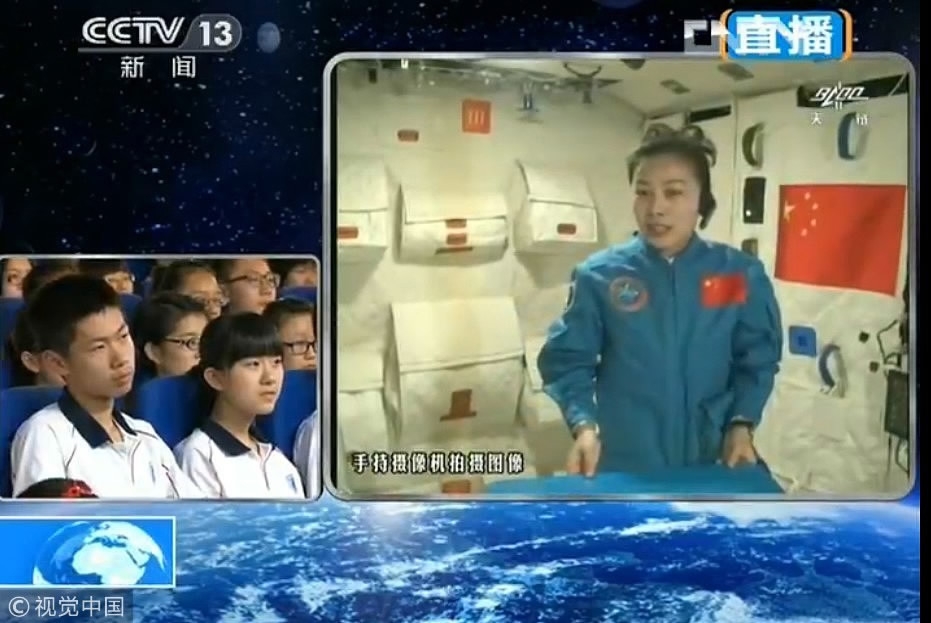
20 June 2013: Chinese astronaut Wang Yaping gives a lecture to students via live video from the Tiangong-1 space lab. /VCG Photo
20 June 2013: Chinese astronaut Wang Yaping gives a lecture to students via live video from the Tiangong-1 space lab. /VCG Photo
On March 16, 2016, Tiangong-1 ceased operations after four and a half years in service, two and a half years longer than its designed lifespan. Wu Ping, then deputy director of the China Manned Space Agency (CMSA), said the craft had "comprehensively fulfilled its historical mission," noting that the office would closely and continuously track its descent.
The CMSA has since kept tabs on the orbital situation of Tiangong-1, which has been decaying at a rate of around 160 meters a day. Latest data from the agency showed that the space lab was orbiting at an average altitude of 286.5 kilometers in the week ending on December 24, 2017, and maintained still its structural integrity.
Fear-mongering or real threat?
The vessel’s gradual descent has given rise to voices claiming that Tiangong-1 is spiraling "out of control" which fueled concerns over possible re-entry hazards despite reassurances from China’s space agency and international experts. Moreover, little empirical evidence support allegations that space modules pose significant threats to human life.
"Based on our calculation and analysis, most parts of the space lab will burn up during falling," Wu said back in 2016, maintaining China is vigilant about the management, mitigation and cleaning of space debris.
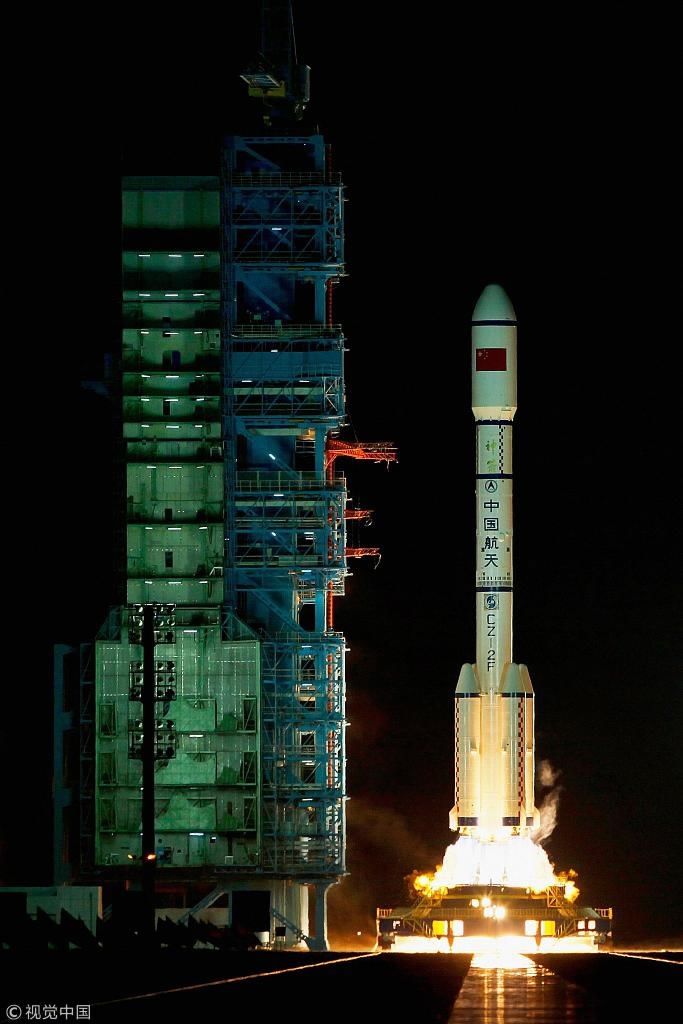
September 29, 2011: A Long March-2F rocket carrying China's first space laboratory module Tiangong-1 lifts off from Jiuquan Satellite Launch Center in Jiuquan, Gansu Province. /VCG Photo
September 29, 2011: A Long March-2F rocket carrying China's first space laboratory module Tiangong-1 lifts off from Jiuquan Satellite Launch Center in Jiuquan, Gansu Province. /VCG Photo
Wu’s statements were reiterated by the Permanent Mission of China to the United Nations in a
note to the UN chief in May 2017.
"Most of the structural components of Tiangong-1 will be destroyed through burning during the course of its reentry. The probability of endangering and causing damage to aviation and ground activities is very low," read the statement, which also included China's pledge to further enhance its monitoring, forecasting and information reporting mechanisms.
"Timely information about important milestones and events during the orbital decay phases will be released through the news media."
As it enters the atmosphere at a speed reaching up to 24,000 km/h, the bulk of Tiangong-1 will immediately burn up and disintegrate owing to great pressure and heat.
But there are legitimate concerns that some portions, such as hardware, might not be destroyed. However, experts believe that the probability of such small parts inflicting harm is statistically insignificant.
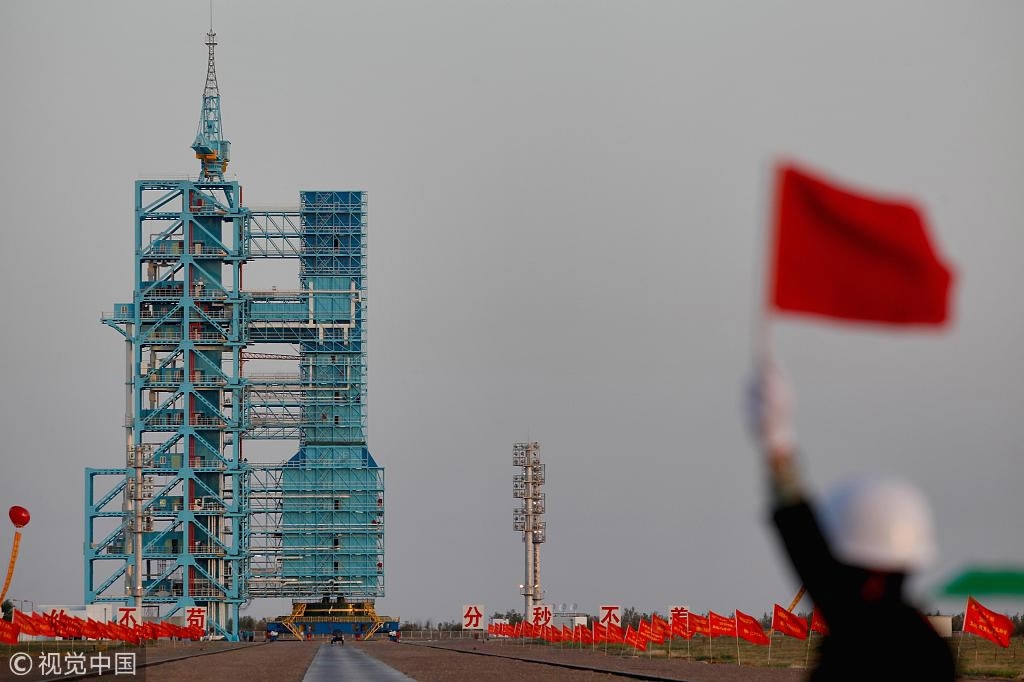
September 29, 2011: A Long March-2F rocket carries China's first space laboratory module Tiangong-1 at Jiuquan Satellite Launch Center in Jiuquan, Gansu Province. /VCG Photo
September 29, 2011: A Long March-2F rocket carries China's first space laboratory module Tiangong-1 at Jiuquan Satellite Launch Center in Jiuquan, Gansu Province. /VCG Photo
"It is highly unlikely that debris from this reentry will strike any person or significantly damage any property," the Aerospace Corporation said, noting that the chance of being hit by fiery debris is "about one million times smaller than the odds" of winning lottery.
It’s more likely for one to be struck by falling airplane parts or eaten by a shark, Matt Williams wrote on space and astronomy news website Universe Today.
In the history of spaceflight, there has only been one case of reentering space debris falling on a person. The incident took place in 1996, but the victim, a lady from Oklahoma, was fortunate enough to walk away without being harmed "in any significant way," according to Aerospace Corporation.
Quashing 'rumors'
On Wednesday,
Global Times (in Mandarin) published an interview with an unnamed aerospace expert working with China National Space Administration, who rebutted allegations that the fall of Tiangong-1 would be problematic, accusing Western media of spreading "rumors".
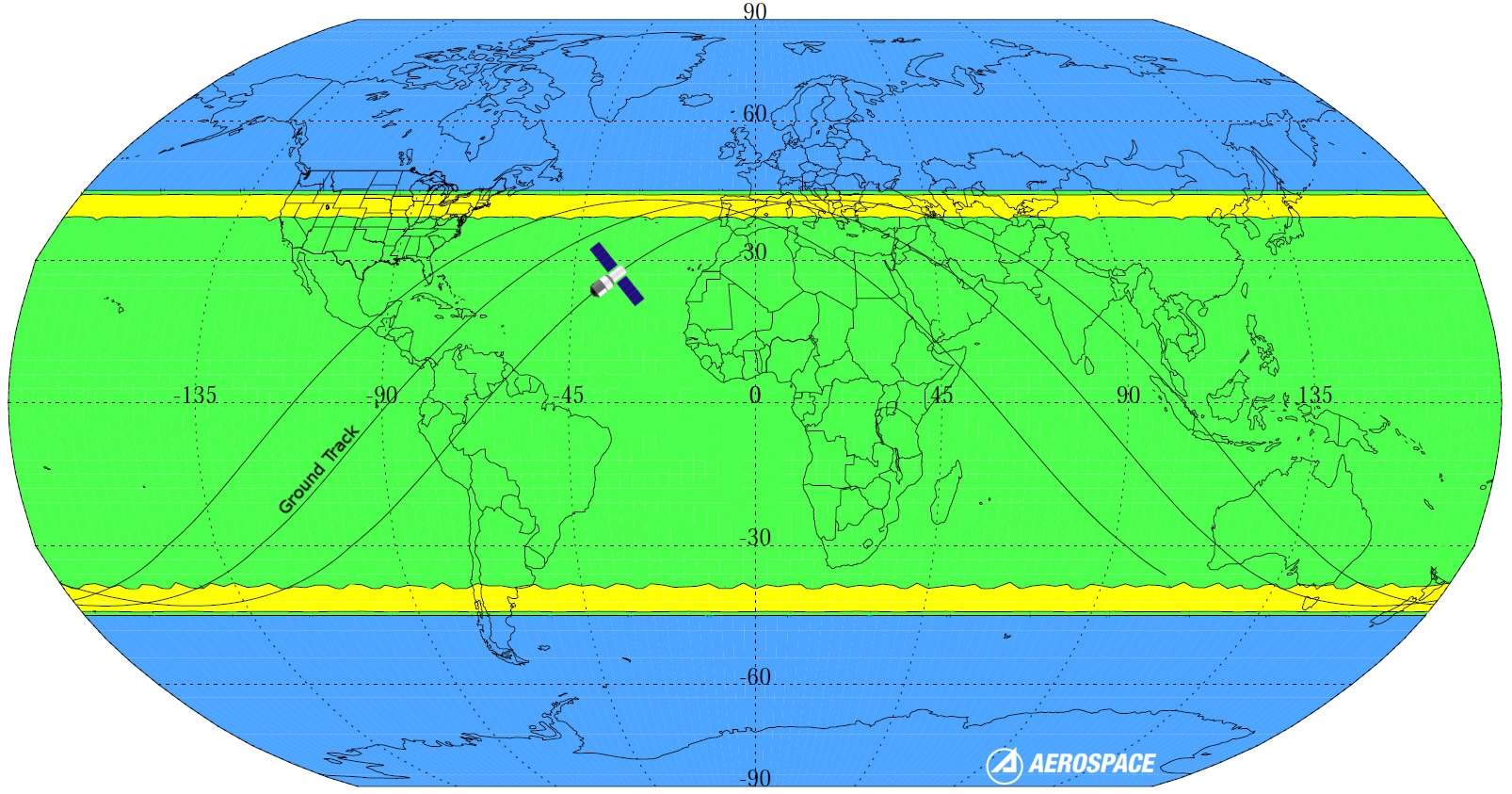
A map shows Tiangong-1's trajectory and the various probabilities of parts landing within a given region. Yellow zones are areas with high probability, green zones are areas with low probability and blue zones are areas with zero probability. /Photo via the Aerospace Corporation
A map shows Tiangong-1's trajectory and the various probabilities of parts landing within a given region. Yellow zones are areas with high probability, green zones are areas with low probability and blue zones are areas with zero probability. /Photo via the Aerospace Corporation
The expert said that the reentry of the space lab will be controlled, noting that the fragments of Tiangong-1 that do not get destroyed will crash in the South Pacific Ocean, drawing from previous examples of controlled reentry experiences, such as that of the Tianzhou-1, China’s first cargo spacecraft which landed back on earth in 2017.
The expert said "China will minimize the impact [of debris landing] on the ground".
The Aerospace Corporation noted that, based on Tiangong-1’s trajectory and inclination, it could reenter somewhere between 43° North and 43° South latitudes, although the regions where debris could fall are a few hundred kilometers in size.
China has yet to announce its final forecast of the region of Tiangong-1's reentry.
(With input from Xinhua News Agency)

